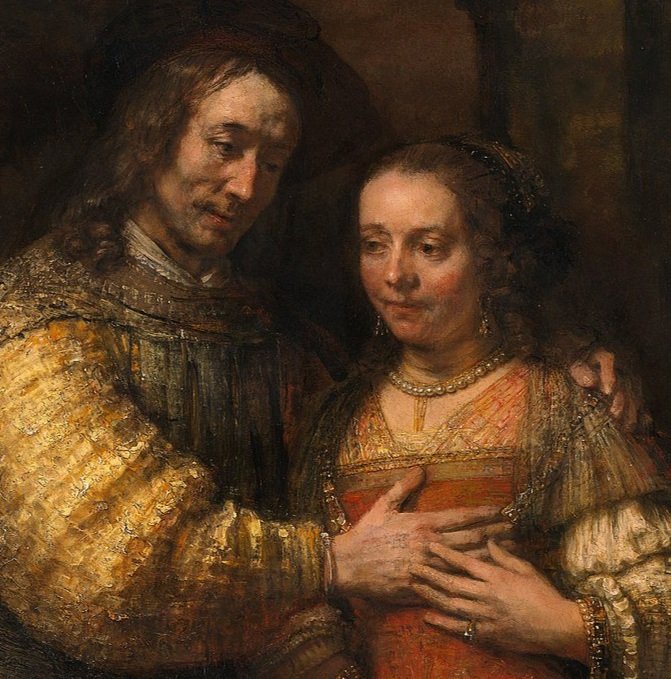
The Greatest Storytellers of the European Baroque
The Greatest Storytellers of the European Baroque
Released: Autumn 2020
6 part series
As the high drama of the 17th century takes centre stage, Rose Balston will bring you tales of seven revolutionary artists from the Baroque period. This is a time of extraordinary artistic prowess where we see art adopted as a political and religious weapon. Art became shockingly real, emotionally potent and more driven by spectacle than ever before. This is the art of persuasion, of prestige, of power.
At times glittering and triumphant, at others poignant and tragic. Caravaggio, Bernini, Rubens, Van Dyck, Velazquez, Rembrandt and Vermeer are our protagonists and their stories will be interwoven with fresh art historical analysis to give you a revitalised understanding of this dramatic century. This series is suitable for everyone, including first-timers to art history and old hands.
Buy Individual Lectures from the Series:
-
Caravaggio: Rebel. Visionary. Murderer. His art was the launch-pad for the Baroque’s high drama and provocative imagery that set the tone for the next 150 years. Why were his works so revolutionary? Why was he feared by many, beloved by few? When he arrived in Rome in 1592, the city was filled with bandits loitering in dark passageways that still reeked from the degradation of the Sack of Rome and insults laid on the Church by Martin Luther and the Protestant movement. As the early years of the 17th century unfolded the city realised that art had the power to save the faith. Caravaggio was to become the church’s enigmatic and violent innovator, whose paintings had the power to stun people into submission through their sheer drama and emotive rigour.
-
Marble or flesh? Conjured into existence by a highly precocious 23-year-old sculptor Gian Lorenzo Bernini, his mythological pieces shocked 17th century visitors to Scipione Borghese’s pleasure palace as much as they do today. No artist defined Baroque Rome more than Bernini. His sculptures stud the city, inside and out. Bernini set himself up to be the greatest magician of his craft that Europe had ever seen – to outshine the ancient Roman sculptors and even Michelangelo himself. Charming, handsome, arrogant and dangerous, Bernini’s story is the epitome of Baroque drama.
-
In 17th century Europe, where nations fought for land and power, art quickly became a vital promotional weapon. At the heart of this struggle was King Charles I – a political disaster yet the most culturally sophisticated of England’s kings. In this talk we’ll learn how he used the arts as an arm of kingship – cajoling and bribing the great artists of Europe to work for him at ever greater cost. Peter Paul Rubens and Anthony Van Dyck were the pick of the bunch. Courtly and enlightened, these two artists were the hot tickets in the 17th century. As they painted and flattered their way from one court to the next, we’ll see how they held the great rulers of the day in the palm of their hands. Never had artists and their art been so powerful.
-
'The Girl with a Pearl Earring' is a painting that has captured our imagination perhaps more than any other work from the 17th century. So simple and direct, yet shrouded in mystery. While she is an anomaly among his other paintings, Vermeer’s art is always still, quiet and ambiguous, thrumming in quiet drama that is so different from other Baroque works. Vermeer’s story will be encapsulated in the wider spectrum of the new Dutch Republic and their extraordinary attitude towards art. Laughing in the face of Catholic ‘taste’, it turned the art market on its head and reinvented fashion to allow Vermeer and his contemporaries to create completely new genres of art.
-
At every stroke of his brush Velazquez broke new ground, whether painting the king, the court, Christ or the kitchen. Working almost exclusively for Philip IV of Spain, we’ll see how Velazquez placed illusion at the heart of all his creations and with them revolutionised the art of the Spanish court. Much of this talk will be spent on one of the most puzzled-over works in the Western canon of art history: Las Meninas. As we carefully unpick it, this cryptic painting will reveal a tapestry of ground-breaking optics, artistic bravura and intricate narratives that get to the heart of Velazquez’s creative ethos.
-
This journey will be an intimate and personal exploration of the last years of Rembrandt’s life. We’ll explore his brazenly bold and defiant brushstrokes where we find intensely personal expressions of love and hope, death and tragedy. Sticking doggedly to his artistic vision when no-one cared, the impact of Rembrandt’s deeply poignant dramas have pulsed through the centuries and still have the power to move and inspire us today.






